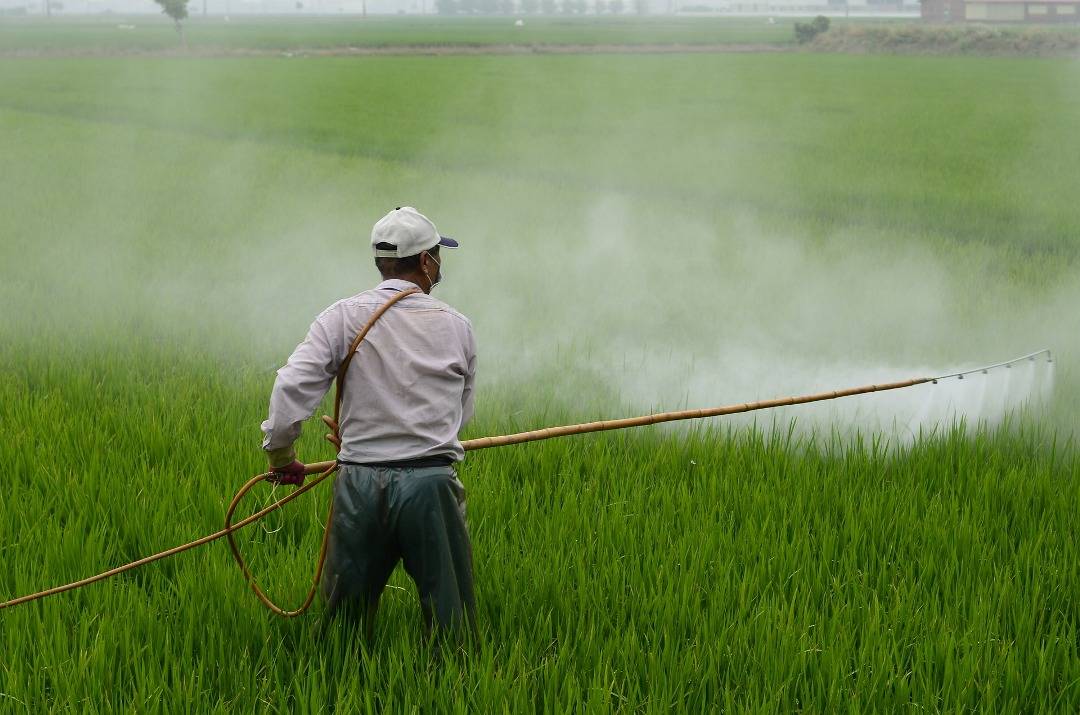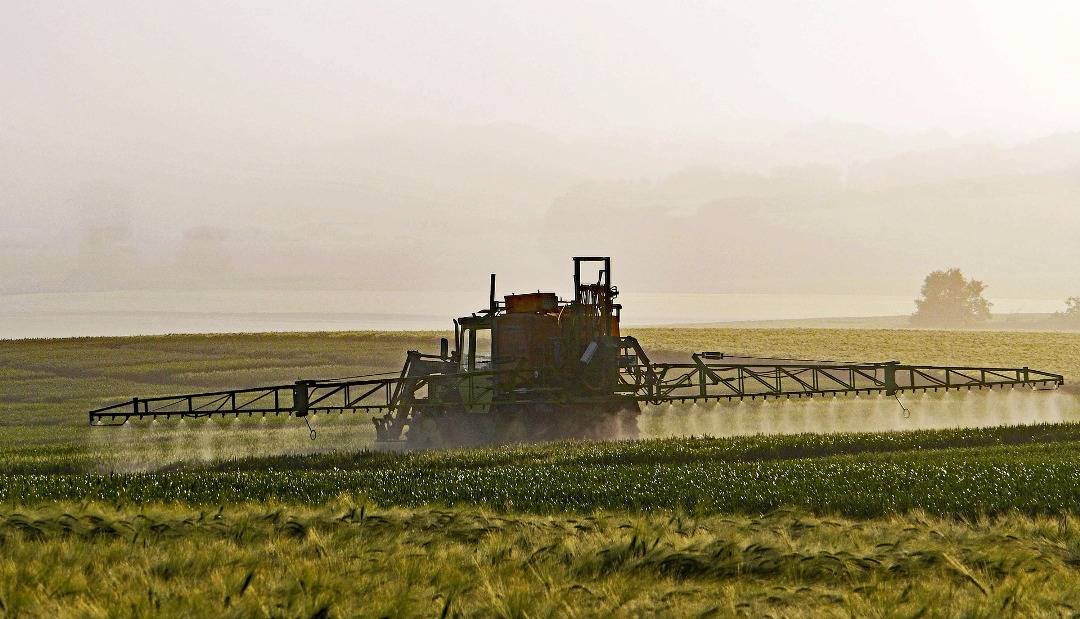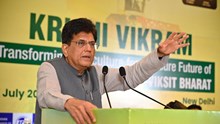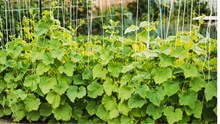
Chemical pesticides have been used in agriculture for decades in the effort to reduce crop loss and to meet the world’s growing food demands. About one-third of agricultural commodities are produced using chemical pesticides.
Global production of pesticides increased by 11% annually, from 0.2 million tons in the 1950s to >5 million tons by 2000. In 2012, on average, around 3.8 million tons of chemical pesticides were applied to agricultural land. This amounts to a value of >40 billion US dollars.
As a consequence of pesticide use, over two million people, mainly residing in developing nations, are at an elevated health risk. The rate of pesticide use varies across the globe, even within the same region. For instance, the average rate of pesticide use is observed highest in Asia, where 6.5-60 kg per ha insecticides are used.
Pesticides Usage in India
India is the fourth-largest producer of pesticides in the world. According to a report by database Research and Markets, the Indian pesticides market was worth Rs 197 billion in 2018.
Pesticide market is further projected to reach a value of Rs 316 billion by 2024, growing at a Compound Annual Growth Rate of 8.1% during 2019-2024. The total as well as per hectare consumption of pesticides in India shows a significant increase after 2009-10. As the cost of manual weed control has risen due to an increase in agricultural wages, this is one of the reasons for the recent increase in pesticide use.
However, in the regions of India, pesticide use is 0.29 t/ha. Maharashtra consumed the most chemical pesticides in India in the past five years at 61,138 tonnes, followed by Uttar Pradesh (UP) at 52,747 tonnes and Punjab at 29,394 tonnes, according to non-profit Pesticide Action Network (PAN). The country used 69,282 tonnes of pesticides (chemical and biopesticides combined) in 2017-18, a sharp increase from the 61,273 tonnes used in 2014-15 and 16 per cent higher than pesticides used in 2015-16. Provisional data showed 60,201 tonnes of pesticide were consumed in 2018-19.

Risks Due to Pesticides Usage
Despite the benefits of using pesticides to improve food safety, intensive and widespread use of chemical pesticides can increase soil pollution, thereby increases environmental and health risks.
Soil properties play a crucial role in the fate, behaviour and dispersion of chemical pesticides and have become the repository of pesticides used in agriculture. It adsorbs most pesticides and degradation products, which might negatively affect different food webs. Pesticides can ultimately reach to human and are thereby subject to bioamplification.
Pesticides get washed away from soils by running water and thus find their way into water sources. Pesticides can also be emitted into the atmosphere through volatilization, which adversely affect air and surface water quality. Runoff and flooding are two major pathways of movement of pesticides that may lead to unintentional diffusion and non-target contamination that can ultimately negatively affect human health.
The concentration of pesticides tends to increase with soil depth and thus, the concentrations found in the bottom soil layer may increase underground water pollution.
Different levels of pesticides were reported across the globe and have threatened humans and the environment. Along with analytical approaches, such as GC-MS and LC-MS, concentrations of pesticides are often estimated depending on their predicted environmental concentrations (PECs).
Farmers are exposed with pesticide-contaminated soils via different pathways such as dermal contact, direct ingestion, and inhalation (Li, 2018).
The increasing probability of humans to develop cancer and non-cancer diseases as a result of such exposure was calculated by adopting USEPA standard models.
Indices such as the hazard quotient (HQ) and the hazard index (HI) are used globally for health risk assessment and are mainly based on the concentration of pesticides. Likewise, risk of pesticides is often estimated based on their predicted environmental concentrations (PECs).
Regulation of Pesticides in India
Pesticides are regulated in India through the Insecticides Act, 1968 and Insecticides Rules, 1971, the experiences in administering this Act over the last five decades has exposed certain gaps.
In this context, the union cabinet has recently approved the Pesticides Management Bill, 2020. The Insecticides Act, 1968 was brought with a view of regulating the import, manufacture, sale, transport, distribution and use of insecticides and pesticides in order to prevent risk to human beings and animals.
Steps to be Taken
-
Focus on Minimal Use of Pesticides: Pesticides should be treated as a temporary stop-gap arrangement wherein the aim should be to use it as a last resort.
-
Strict Regulation of Pesticides: Necessary provisions should be made in the Bill to ban sale and use of Class I pesticides.
-
Capacity Building of Farmers: Over the counter, availability and dealer influence has caused severe overuses and misuses. Farmers must be made aware of judicious usage, pesticides must be sold and used cautiously under supervision like drugs. Like drugs, target, dosing, mode of application and unbiased advice for the usage of pesticide is critical.
-
Greater say to State Governments: State governments should have the power to regulate pesticides as they have a better idea about the agro-ecological aspects of their state.
-
Green Alternatives: Today, there are enough well-proven, successful alternative agro-ecological methods of pest management without using any chemical pesticide in India and globally.
-
Further, research and innovations must be made to phase out the usage of chemical pesticides completely as soon as possible.
-
Pesticide should be replaced with Biopesticides.
-
Apart from it, Government is promoting organic farming through various schemes/ programmes like Paramapragat Krishi Vikas Yojana (PKVY), Rashtriya Krishi Vikas Yojana (RKVY) etc.
About Authors:
Dr. Hadi Husain Khan: Research Associate, ICAR-DRMR-APART, Dhubri -783324 (Assam), India.
Nirmal Chandra Ghose: SDAO (HQ)-Cum-Nodal Officer, ICAR-DRMR-APART, Dhubri - 783324 (Assam), India.
Mehtubuddin Ahmed, Nur Alom Sarkar, Afsar Ali khan, & Saiful Islam: Assitant Technical Managers, District Agricultural Office (ATMA), Dhubri - 783324 (Assam), India.














Share your comments